Sometimes, you just need to listen to your art-self . . . a guest post by Patricia Ward
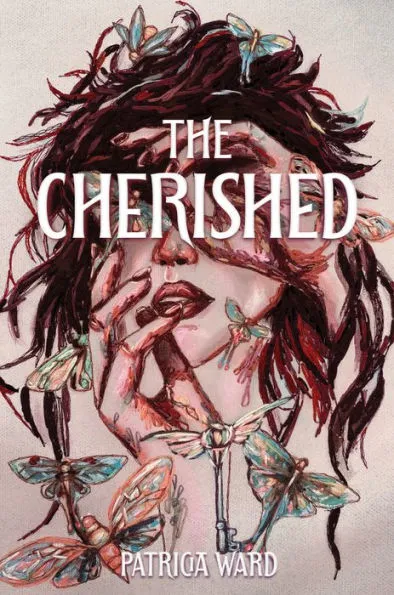
1.
Several years ago, I made a reversible accordion book called The Same One Place about the connections between my childhood home of Beirut, Lebanon and the town where I was living, Maynard, MA. The Beirut side explores the trauma of the war and of having to leave Lebanon, and the Maynard side finds the ways my new home overlaps with the one I lost—the view of water, the stone garden steps, the pine trees—and discovers new elements that can be loved. I conclude that “this is home . . . I can be happy here.”
Except not long after making that book, I moved yet again, this time to Vermont.
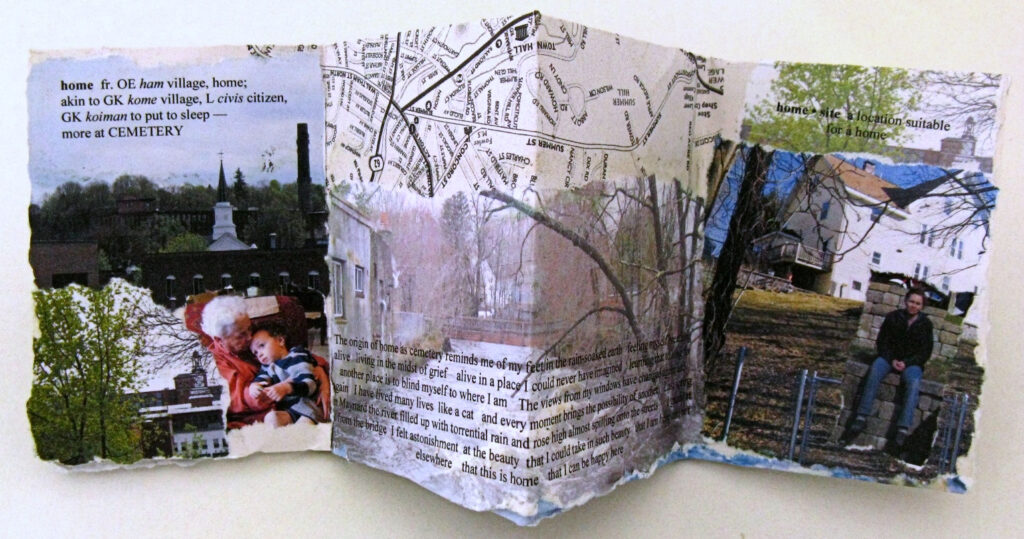
The move was by choice, but it still triggered lifelong sorrows and anxieties around my identity and sense of belonging. Would this new place ever feel like home? What if circumstances drove me to pack up and move again in a handful of years?
ADVERTISEMENT
ADVERTISEMENT
I’ve always thought of The Same One Place as poignant and unique. Poignant because I moved again after making that bold claim about home. Unique because it reflected the one and only time I believed I could establish a true home after years of roaming from one place to the next, making new friends then leaving them behind, never staying long enough to feel rooted.
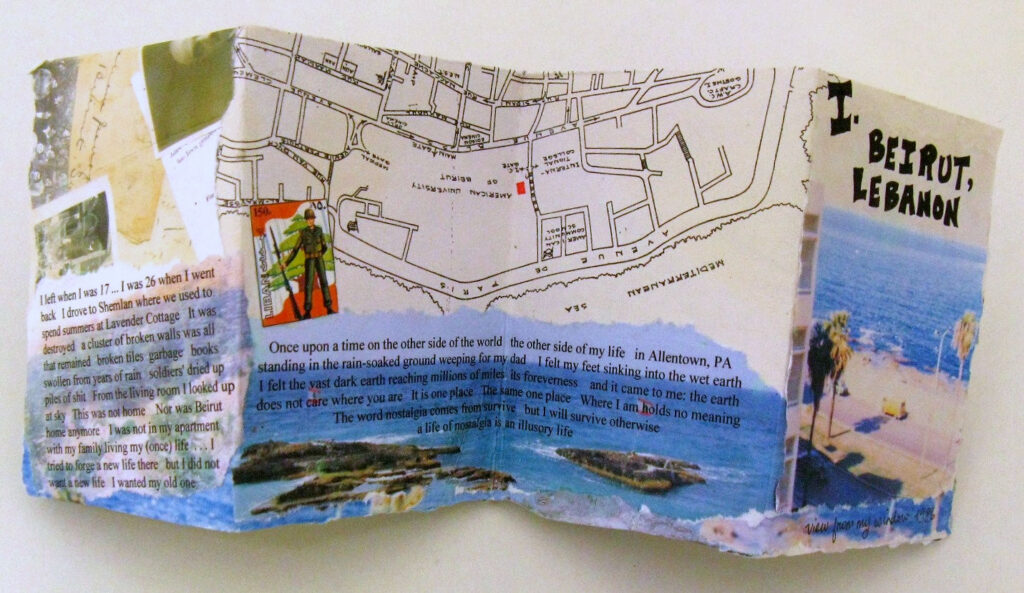
In composing this guest post and thinking about my latest novel, The Cherished, I have realized something astonishing: The Same One Place is not unique at all. In fact, every single one of my works, whether a literary or fantasy novel, whether a paper diorama or accordion book, offers the same poignant promise of home. A few examples: At the end of my first novel, The Bullet Collection, the narrator marvels at the snowfall in America and visualizes the white winged horse of her childhood in Lebanon galloping through it, fusing her two worlds, offering a glimpse of hope. At the end of Skinner Luce, the main character, an alien, is literally in a car heading home to her human mother. The entire collection of Re/Vision, my book arts installation, is about coming to terms with loss and moving forward.
And so here I am, looking into a mirror at my art-self, who suddenly seems to know a lot more than I do. I think I’m finally ready to listen.
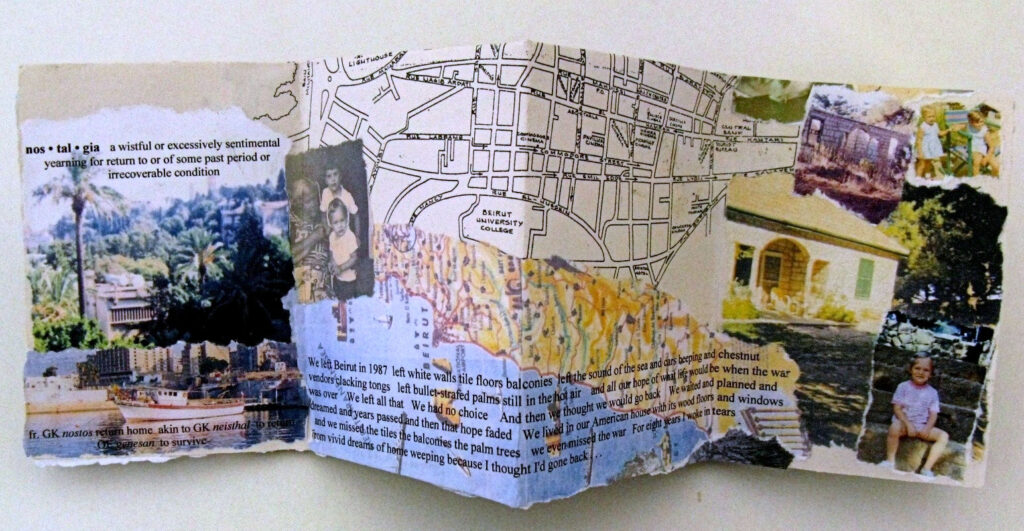
2.
When I was little, ‘home’ was obvious: it was our apartment in Beirut, and our cottage in the mountains, in the village of Shemlan. On a grander scale, ‘home’ was Lebanon. That innocent, simple trust, though, was eroded by years of war that left our family in perpetual uncertainty. My parents were torn – should they leave, give their kids a normal childhood? Should they stay, hold out hope the war would end at some point? Our family even appeared on American TV, asked by a journalist why on earth they were staying in Lebanon when there was a war going on.
Because this is home, my parents said.
They were interviewed on our spacious balcony, surrounded by plants, looking relaxed and content. My sister and I darted in and out, delighted, giggling. I remember the feeling of that apartment: the sun heating the balcony tiles, the tall shutter doors, the dim hallway leading to the kitchen. Home.
The war forced us to move three times within Beirut. My sister and I had to change schools, and then we were sent abroad for a few years. When I graduated and came back, my identity as half-American, half-Lebanese, which had always been uncomfortable, became a kind of torture in the openly anti-American atmosphere of the late 80s.
In this way, the war fractured our lives bit by bit, then it finally broke them. The decision whether to stay or leave was taken from us when it became too dangerous for my American father to continue living in Lebanon. So we left.
That was a few days before I turned 18. Since then, I’ve moved seventeen times, going back and forth between Italy, Lebanon, and nine U.S. states.
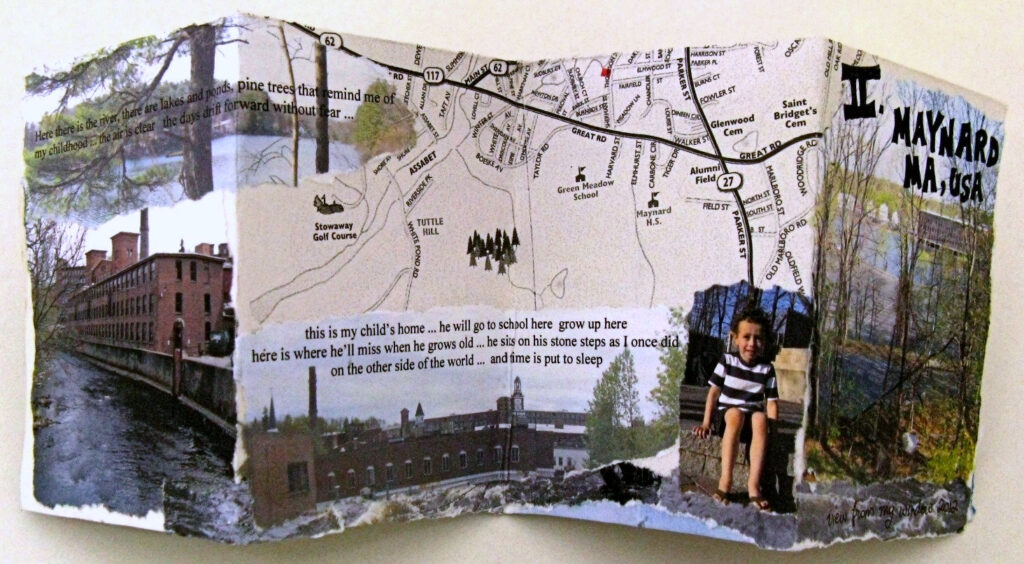
3.
Home. Nostalgia. Memory and trauma. Immigration. Loss. I thought I’d never overcome these hurts, and yet in every piece of art or writing, I’ve found a new truth layered in shadow, or dispelled old bitterness in an unexpected turn of phrase, or tugged an answer from a tangle of threads.
There is something truly optimistic about this that contradicts the often dark, grueling subject matter of my books. In my latest novel, The Cherished, 16-year-old Jo Lavoie must come to terms with the terrifying inheritance bequeathed by her estranged grandmother, and ultimately choose whether or not to embrace it. The story isn’t so much about what choice she will make as it is about the journey towards that choice. Jo is fundamentally trying to get to where she belongs: she is going home.
As in my other works, themes of trauma, identity, and belonging are layered into the story. Jo feels out of place in the wealthy, narrow-minded old-Boston milieu where she is being raised. She identifies more with her father, who was pushed out of the family years ago and then died before she could fully reconnect with him. Her maternal grandmother always refers to his mysterious background and irrational behavior with mockery and insensitivity, alienating Jo all the more. She feels acutely that she doesn’t belong in her own family, and yearns for the time she will be old enough to flee.
Through Jo, I posed lifelong questions about my own hurting around identity and belonging. Then, slowly, the answers rose to the surface, this time through a violent, otherworldly crucible.

The book is set in Vermont, and now, when I look out my window at the fields and sky, I am able to feel the possibility of contentment, just as Jo is able to despite the dangerous, terrifying secrets burrowed into the earth. This is the nature of trauma, after all. It is never erased, but you might find a way to grow from it.
When I was young, I read voraciously. I learned through the suffering and travails of fictional characters that my own suffering might be endured, that it might be given shape and meaning beyond itself. I hope that The Cherished will speak to teenagers the way books did to me when I was young, as support for how to forge a life despite one’s hurting or fear. I hope that it will impart the message I have sent to myself, once again, that this is home … I can be happy here.
Meet the author
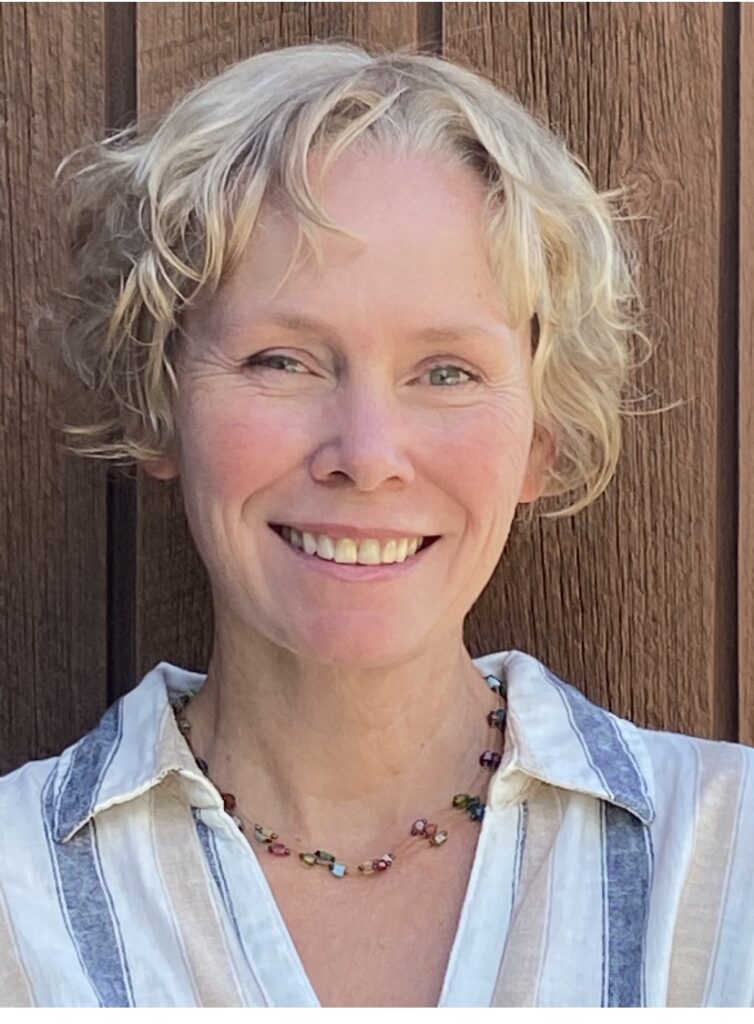
ADVERTISEMENT
ADVERTISEMENT
Patricia Ward was born and raised in Beirut, Lebanon, moving to the United States when she was eighteen. She is the author of The Bullet Collection (Graywolf Press, 2003) and Skinner Luce (Talos Press, 2016). Ward is also a book artist specializing in miniature books and dioramas. She lives with her family in Vermont. The Cherished is her first young adult novel, and you can find her at www.patriciasarrafianward.com.
https://www.facebook.com/patriciasarrafianward
About The Cherished
For fans of White Smoke, The Hazel Wood, and Wilder Girls comes an original, hypnotizing horror thriller in the vein of Midsommar, as one girl inherits a mysterious house from her estranged grandmother—and a letter with sinister instructions.
Jo never expected to be placed in her absent grandmother’s will—let alone be left her house, her land, and a letter with mysterious demands.
Upon arriving at the inherited property, things are even more strange.
The tenants mentioned in the letter are odd, just slightly…off. Jo feels something dark and decrepit in the old shack behind the house. And the things that her father used to talk about, his delusions… Why is Jo starting to believe they might be real?
But what Jo fears most is the letter from her grandmother. Because if it’s true, then Jo belongs here, in this strange place. And she has no choice but to stay.
ISBN-13: 9780063235113
Publisher: HarperCollins Publishers
Publication date: 04/18/2023
Age Range: 13 – 17 Years
Filed under: Guest Post
About Amanda MacGregor
Amanda MacGregor works in an elementary library, loves dogs, and can be found on BlueSky at @amandamacgregor.bsky.social.
ADVERTISEMENT
ADVERTISEMENT
SLJ Blog Network
The 2025 Children’s Lit Animal Rankings
Review of the Day: Fireworks by Matthew Burgess, ill. Cátia Chien
Cat Man | Review
When Book Bans are a Form of Discrimination, What is the Path to Justice?
ADVERTISEMENT







